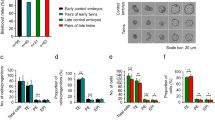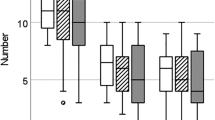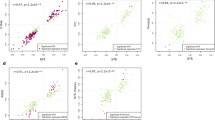Abstract
VINCRISTINE SULPHATE (Oncovin, Lilly) is a drug commonly used in the chemotherapy of acute leukaemias in children, lymphomas and certain other malignant conditions. We describe here experiments investigating the teratogenicity of this drug during the early stages of embryogenesis in the mouse. We report that a low incidence of gross anomalies was observed in fetuses on days 10 and 12 of gestation when pregnant females were treated with a single dose of this agent on the sixth, seventh or eighth day of gestation. However, contrary to expectation, a high proportion of litters from females treated on the seventh and eighth day of gestation contained at least one set of monozygotic twins. In this respect the present study is unique in that an experimental method of inducing a low but significant incidence of identical twinning in a mammal is reported. Furthermore, this work provides direct evidence regarding the comparatively late stage of embryonic development when identical twin formation may be induced in the mouse, as the most advanced stage at which twinning could be induced with vincristine was at the early headfold stage. However, the highest incidence of monozygotic twinning was obtained when pregnant females were treated on the morning of the seventh day. of gestation, when embryos would be expected to be at the advanced egg-cylinder stage. It was in this latter group that a single conjoined twin of the janiceps type (cephalothoracopagus) was obtained. The possible aetiology of monozygotic and conjoined twin formation is briefly discussed here in the light of these experimental findings.
This is a preview of subscription content, access via your institution
Access options
Subscribe to this journal
Receive 51 print issues and online access
$199.00 per year
only $3.90 per issue
Buy this article
- Purchase on Springer Link
- Instant access to full article PDF
Prices may be subject to local taxes which are calculated during checkout
Similar content being viewed by others
References
Joneja, M. & Ungthavorn, S. Teratology 2, 235–240 (1969).
Perm, V. H. Science 141, 426 (1963).
Bodemann, E. Anat. Rec. 62, 291–294 (1935).
Perm, V. H. & Hanover, N. H. Archs envir. Hlth 19, 353–357 (1969).
Patterson, J. T. J. Morph. 24, 559–682 (1913).
Bulmer, M. G. The Biology of Twinning in Man (Clarendon, Oxford, 1970).
Hamilton, W. J. & Mossman, H. W. Human Embryology, 4th edn (Heffers, Cambridge, 1972).
Green, E. L. Biology of the Laboratory Mouse (McGraw-Hill, London, 1966).
Ferm, V. H. Teratology 17, 159–164 (1978).
Hay, M. F. J. Reprod. Fert. 8, 49–76 (1964).
Tuchmann-Duplessis, H. & Mercier-Parot, L. C. r. hebd. Séanc. Acad. Sci., Paris 253, 321–323 (1961).
Author information
Authors and Affiliations
Rights and permissions
About this article
Cite this article
KAUFMAN, M., O'SHEA, K. Induction of monozygotic twinning in the mouse. Nature 276, 707–708 (1978). https://doi.org/10.1038/276707a0
Received:
Accepted:
Issue Date:
DOI: https://doi.org/10.1038/276707a0
This article is cited by
-
Morphology of a dicephalic cat
Anatomy and Embryology (1992)
Comments
By submitting a comment you agree to abide by our Terms and Community Guidelines. If you find something abusive or that does not comply with our terms or guidelines please flag it as inappropriate.



